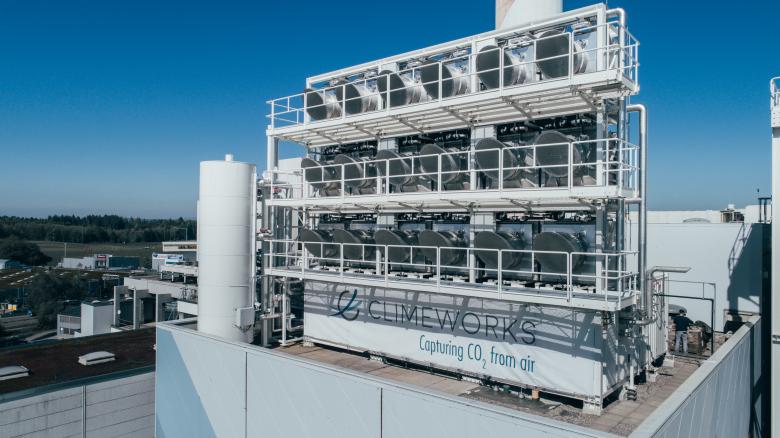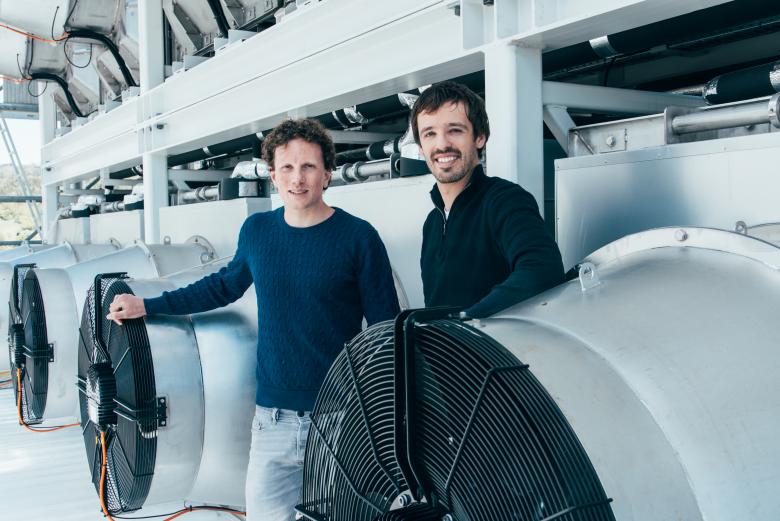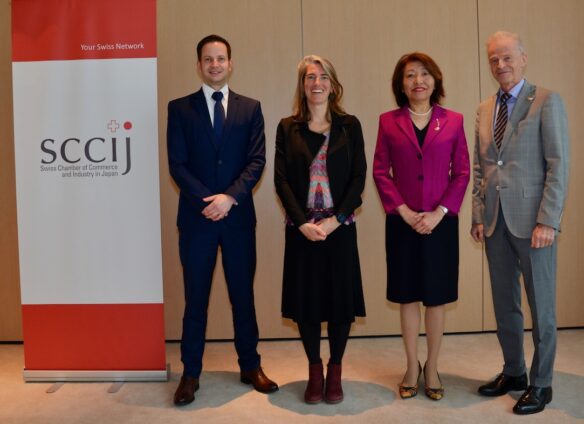Tokyo (SCCIJ) – The Zurich-based company Climeworks has developed giant sensors to filter ambient air and capture carbon dioxide (CO2). Since the launch of the start-up in 2017, its technology has made its mark in several different sectors. Climeworks aims to eliminate one percent of global carbon dioxide emissions by 2025. The two founders of Climeworks have helped to put Switzerland at the forefront of the worldwide fight against climate change.

Eighteen CO2 sensors are mounted onto the roof of the waste incinerator plant in Hinwil in the canton of Zurich.
Boom in negative emissions
Removing CO2 from the atmosphere is what scientists call negative emissions. On paper, there are several ways to achieve this. The easiest way is to plant forests. Bioenergy is a second possibility. There is a third way that is emerging – using physicochemical processes to capture atmospheric CO2 directly and then storing it underground.
The Swiss start-up Climeworks is exploring this avenue by developing a kind of giant vacuum cleaner to filter ambient air and trap carbon dioxide before injecting it underground. This far-from-ridiculous solution is the brainchild of Christoph Gebald and Jan Wurzbacher, two engineers from the Swiss Federal Institute of Technology Zurich (ETH Zurich).
Greenhouses in Hinwil
In June 2017, the two Climeworks founders put their idea into action at a waste incinerator in Hinwil in the canton of Zurich. They fitted eighteen CO2 sensors to the roofs at the plant. The sensors pump carbon dioxide from the atmosphere and filter it.
This gas is then piped to a nearby greenhouse growing vegetables, which show a 20 percent increase in growth thanks to the extra CO2. The successful project is the result of several years of research. Climeworks is currently absorbing 900 tonnes of CO2 in Hinwil each year – the emissions equivalent of about 30 households.
Switzerland, Iceland, Italy
The Zurich start-up’s technology is also attracting attention abroad. In 2017, Climeworks set up a similar system in Iceland. Here, the CO2 is not used to grow vegetables but is trapped at a depth of 700 meters where it turns into white stone in a layer of basalt. The system currently removes 50 tonnes of CO2 per year, but its capacity will be increased to reach an annual target of 2,500 tonnes.
Last October, Climeworks opened a third site in Apulia, Italy, as part of the European Union’s Horizon 2020 research program. Here, CO2 is combined with hydrogen produced using a renewable energy source – photovoltaic electricity – which creates natural gas that can be used as fuel for trucks.

The Climeworks founders Christoph Gebald and Jan Wurzbacher are engineers from ETH Zurich.
Towards democratization
In August 2018, Climeworks raised CHF 30.5 million from private investors and the Zürcher Kantonalbank, which shows just how much interest the technology is generating. This sum should enable the company to meet a significant challenge – reducing costs down to a level suitable for mass production.
Climeworks currently spends between USD 600 and 800 on each tonne of captured CO2. By continuing to improve its sensors, the company is aiming to reduce this amount to USD 200 in the next three to four years, and USD 100 in the long term.
Given the world’s climate emergency, the two Climeworks founders are confident about the future of their company, which is already applying its solutions in a wide range of areas.
Text: © Mehdi Atmani/House of Switzerland; Photos: © Julia Dunlop





























